What is Killing South Africa's Seals?
Thousands of emaciated seals have been washing up along the Cape coast, and researchers are looking for answers.

[By Emma Bryce]
From a distance, a seal appears to be napping on the rust-colored rocks; members of its small colony grunt at one another as sea spray brings some respite from the searing midsummer heat. But on closer inspection, one of the seal’s eyes is open and pointing vacantly at the sky.
Tess Gridley bends over the dead animal, and instructs her university students and volunteers to check for parasites. Fewer bugs means a fresher carcass, which is what these researchers are looking for. Binoculars pressed to her face, Gridley scans the rocky outcrop and finds five more bodies, which the students line up on the rocks in a funereal procession. “A colony of this size, you wouldn’t expect to see so many freshly dead,” she says.
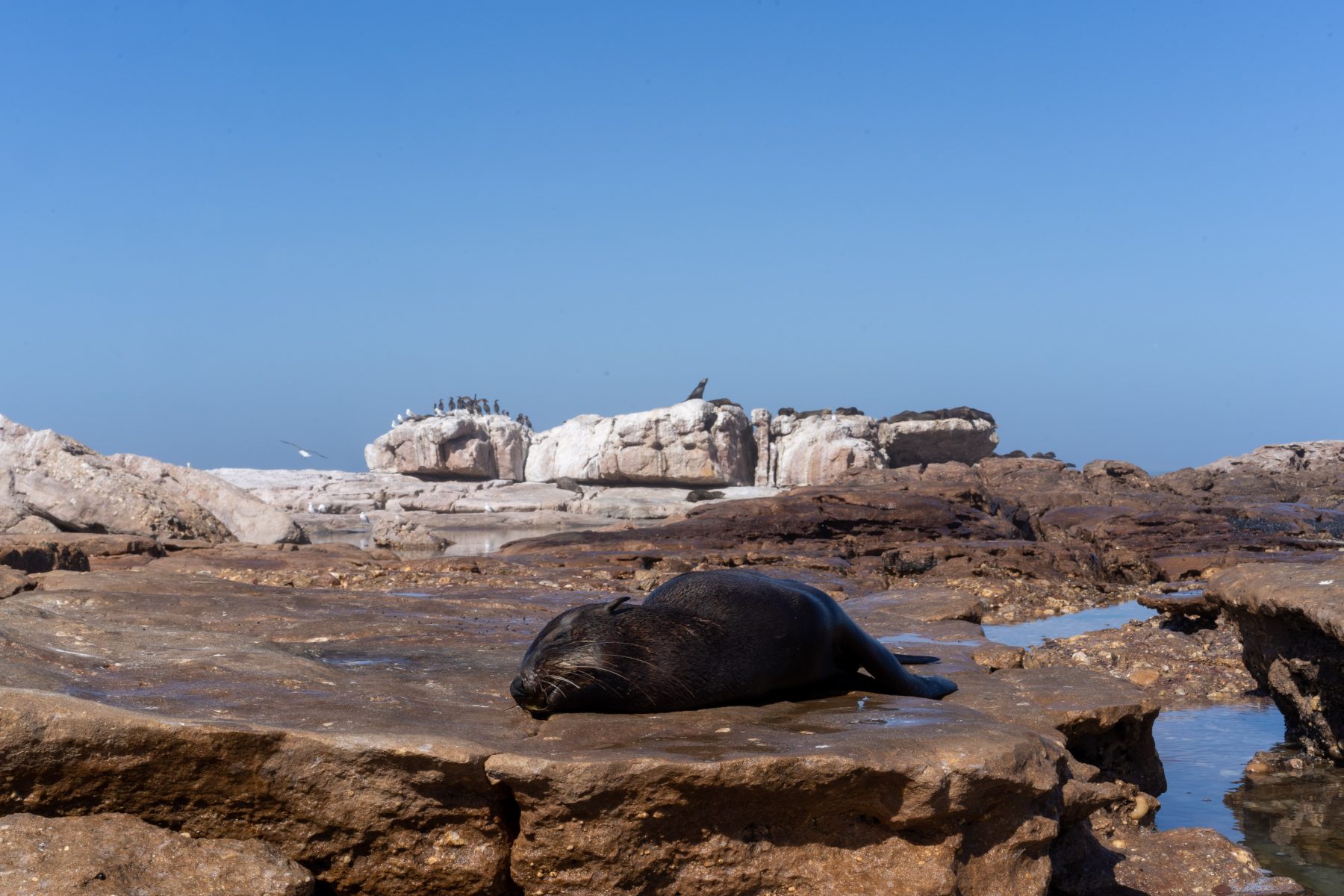
A young Cape fur seal lies dead on the rocky coast of South Africa’s Western Cape. The species has suffered a wave of mysterious deaths since September last year, with scientists struggling to discover the causes. (Image: Barry Christianson / China Dialogue Ocean)
Gridley and her team have travelled to this stretch of Western Cape province to investigate why thousands of Cape fur seals have been washing up along South Africa’s shores. When a wave of deaths started in September 2021, Gridley, a behavioral biologist and director of research organization SeaSearch, paused her work on whale and dolphin acoustics to help deal with the unfolding crisis. For months she has walked miles of coastline, picking through seal bodies, searching for clues.
Now, with jars of formalin at the ready, and gloved up to the elbows, she and her team prepare to add six more seals to their evidence base. Slicing into the first animal, they peel back the blubber and muscle. In the stench and heat, they take samples of lungs, liver, stomach, heart. A bright crimson stream makes its way from the body back to the sea. Gridley, meanwhile, is focused on an especially grim task: extracting the brain. “Where’s that axe?” she asks. Somebody hands it to her. Gripping the handle, she steadies herself, then severs the seal’s head.
An ecosystem under stress
South Africa is renowned for its sea life. Thousands of visitors come every year to watch whales, dive with great whites, and even swim with seals in the country’s rich kelp forests. But when scores of seal foetuses, juveniles and adults began washing up last year on Western Cape beaches, it seemed an ominous sign of a marine ecosystem under stress, with potentially far-reaching consequences for the lucrative tourism economy on which many depend.
Seal die-offs aren’t new: the 2-million-strong Cape fur population experiences natural cycles of boom and bust, and seal pups are often swept out to sea during the windy breeding season. Pregnant females also occasionally abort foetuses, which wash up on the shore. But this time, the proportion of dead adults was striking. “While it’s normal for a portion of the population to die during the breeding period, this was affecting other age groups that aren’t usually affected. I think that’s what sounded the alarm bells,” says Mduduzi Seakamela, a marine scientist at the South African Department of Forestry, Fisheries and Environment (DFFE) who monitors populations of sea animals including seals.
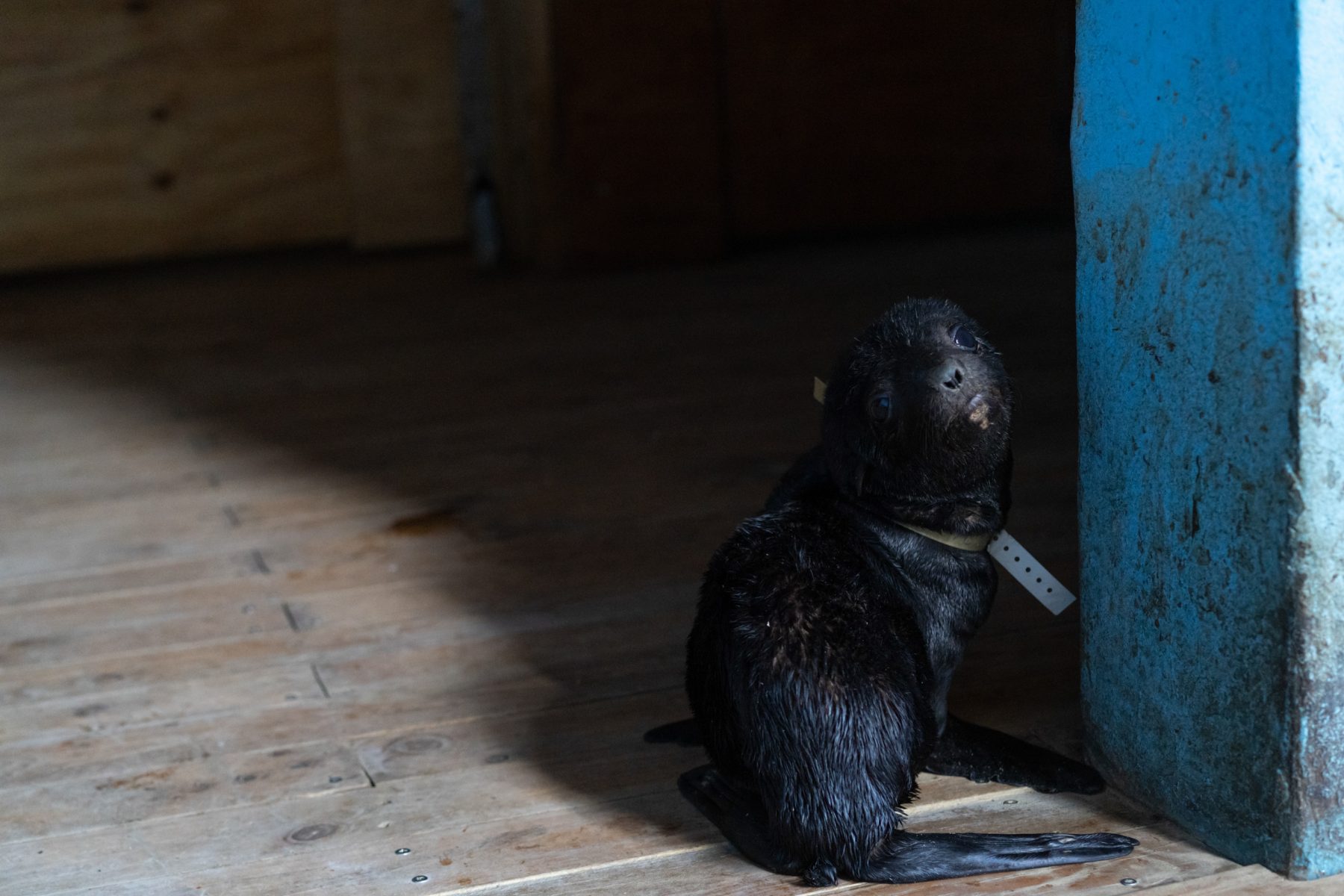 A rescued baby seal at the Hout Bay Seal Rescue Centre, near Cape Town (Image: Barry Christianson / China Dialogue Ocean)
A rescued baby seal at the Hout Bay Seal Rescue Centre, near Cape Town (Image: Barry Christianson / China Dialogue Ocean)
Across all age groups, most beached seals also appeared to be undernourished. “I can honestly say last year was the worst thing I have ever seen,” says Kim Krynauw, operational director of the Hout Bay Seal Rescue Centre. Based 20km from Cape Town, the center has for months been rehabilitating beached animals, nursing hungry seals back from the brink with a formula rich in electrolytes. Many rescued animals haven’t been so lucky. “What came back in our necropsies was low body fat, no food at all in their bodies – starvation,” Krynauw says.
There is also evidence that some animals are having seizures before they die, suggesting disease rather than lack of prey might underpin the die-off. And in the context of a marine ecosystem that’s already showing signs of stress from climate change, overfishing and pollution, researchers are starting to wonder whether the seal deaths are the latest symptom of a larger decline.
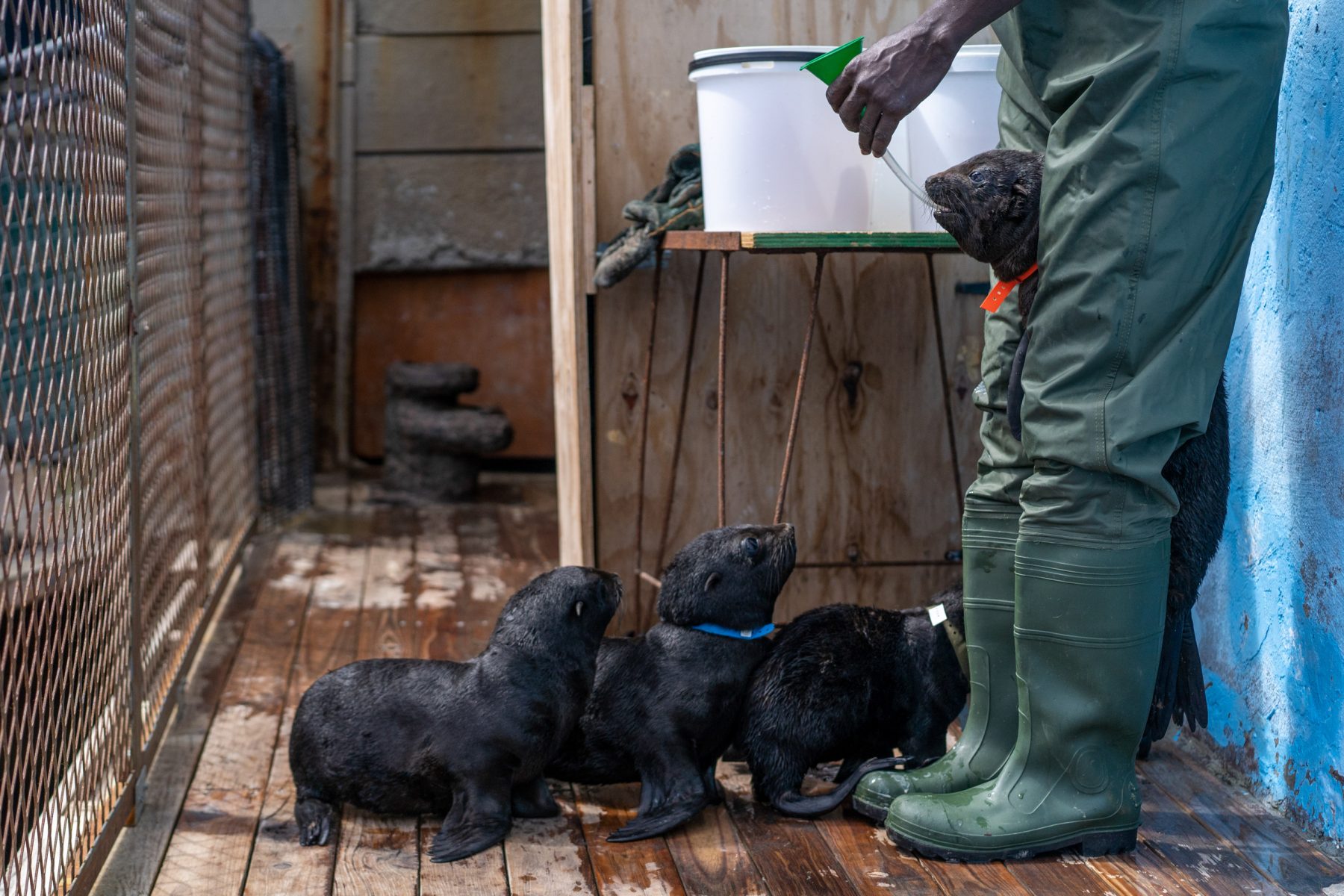 Keeper Abel Banda feeds the baby seals using a funnel and tube (Image: Barry Christianson / China Dialogue Ocean)
Keeper Abel Banda feeds the baby seals using a funnel and tube (Image: Barry Christianson / China Dialogue Ocean)
The acid-poisoning theory
Gridley remembers the week in early September 2021 when this unusual pattern of deaths began. Sea Search’s Namibian arm started reporting mass deaths, and Gridley swiftly headed to the Cape’s West Coast, a region characterized by white-sand beaches, fishing villages and seal colonies. “On the high tide we had tens of aborted pups coming in,” Gridley recalls. By October, the numbers had risen. The DFFE, SeaSearch and other NGOs including the SPCA and Hout Bay Seal Rescue Centre began working together to document the dead. But there was limited capacity to analyse carcasses. Gridley decided to leverage Sea Search’s resources to investigate more systematically: “The only reason we’ve really taken a lead on this, is that nobody else has.”
Since then, under the instruction of two veterinary scientists, Gridley and team have learned how to tweeze out seal whiskers (handy for detecting pollutants in the water); clip out segments of seal fin (to decipher genetics) and extract brains (which may have lesions indicating disease). Late morning on that hot January day, Gridley finally opens the seal’s skull with a nauseating crack, and prises out the brain. This body will add to about 60 sample sets gathered so far, for testing various theories on what is causing the wave of deaths.
One theory is uppermost in researchers’ minds. Preliminary analysis shows many animals have oedema on the lungs, a type of swelling suggesting they drowned. This hints at seizures, says Luca Mendes, a veterinarian from the Two Oceans Aquarium in Cape Town who has been assisting Gridley, which may indicate poisoning by a neurotoxin called domoic acid, a by-product of algal blooms.
“Domoic acid binds to neurons in the brain, and it causes [animals] to have seizures and die,” says Frances Gulland, a veterinary scientist at the Wildlife Health Center, University of California, Davis. She was part of a team that first identified domoic acid poisoning in California in 1998, where thousands of sea lions died over the course of just a few weeks. “It was a mystery at the time,” she says. Since then, outbreaks have been identified every few years in the state, and become a major health concern because the acid also accumulates in commonly consumed fish and shellfish.
Gridley is curious about whether the phenomenon has come to South Africa, and what it could mean for wildlife as well as people. Alongside causing seizures, vomiting and behavioral change in seals, domoic acid can also cross the placental barrier, which might explain the high volume of aborted foetuses. It could also account for sudden deaths of seemingly healthy animals – such as the recent die-off of roughly 1,000 Cape fur seals in Namibia, most of which were well-nourished.
To find out, Gridley is working with algae specialist Grant Pitcher, from the DFFE: he’s on the trail of the toxic algae family that produces domoic acid, Pseudo-nitzschia. “The West Coast is subject to a higher frequency of harmful algae,” Pitcher notes, because of the regional Benguela current that fuels its nutrient-rich upwellings – the same system that supports the abundant fish which the seals consume. So far, he’s identified two types of Pseudo-nitzschia that make domoic acid – although, in much smaller concentrations than the outbreak that drove the California sea lion die-off.
The ultimate proof will be in the seals’ bodies: domoic acid presents in stomach juices, faeces and urine. But it also leaves the system rapidly, which is why finding freshly dead animals is such a boon. A case in point is when a few animals were submitted to the South African state vet for domoic acid testing in late 2021. The results were negative but they were treated as inconclusive because the animals had reached the vet a while after death, possibly compromising the samples, Seakamela explains.
Gridley hopes to soon carry out a more comprehensive analysis on the samples she’s gathered, but tests to identify the acid are very expensive, which has stalled her progress. For now, the samples lie in wait, split between her office freezer and the Two Oceans Aquarium.
For Gridley, pinning down domoic acid as an acute cause of these deaths would at least explain the carnage of recent months. “Nobody’s tested for it properly [in South Africa], and therefore nobody’s found it. So I’m hoping that we can be the first people to do so.”
Unpredictable prey
At the same time, it’s been impossible to ignore the deprived condition of so many of the sampled seals, Mendes says. “I don’t think I saw one animal that had a healthy level of fat. You don’t just go from two centimetres of fat to two millimetres overnight; that’s a gradual process that might suggest a chronic issue at sea.”
The hunger factor is significant because it’s evident in other marine species, too. In late January, at the Southern African Foundation for the Conservation of Coastal Birds (SANCCOB) in Cape Town, 130 African penguin eggs were lined up neatly in an orange-lit incubation room. They had all been abandoned by their parents. SANCCOB researchers think it might come down to availability of prey.
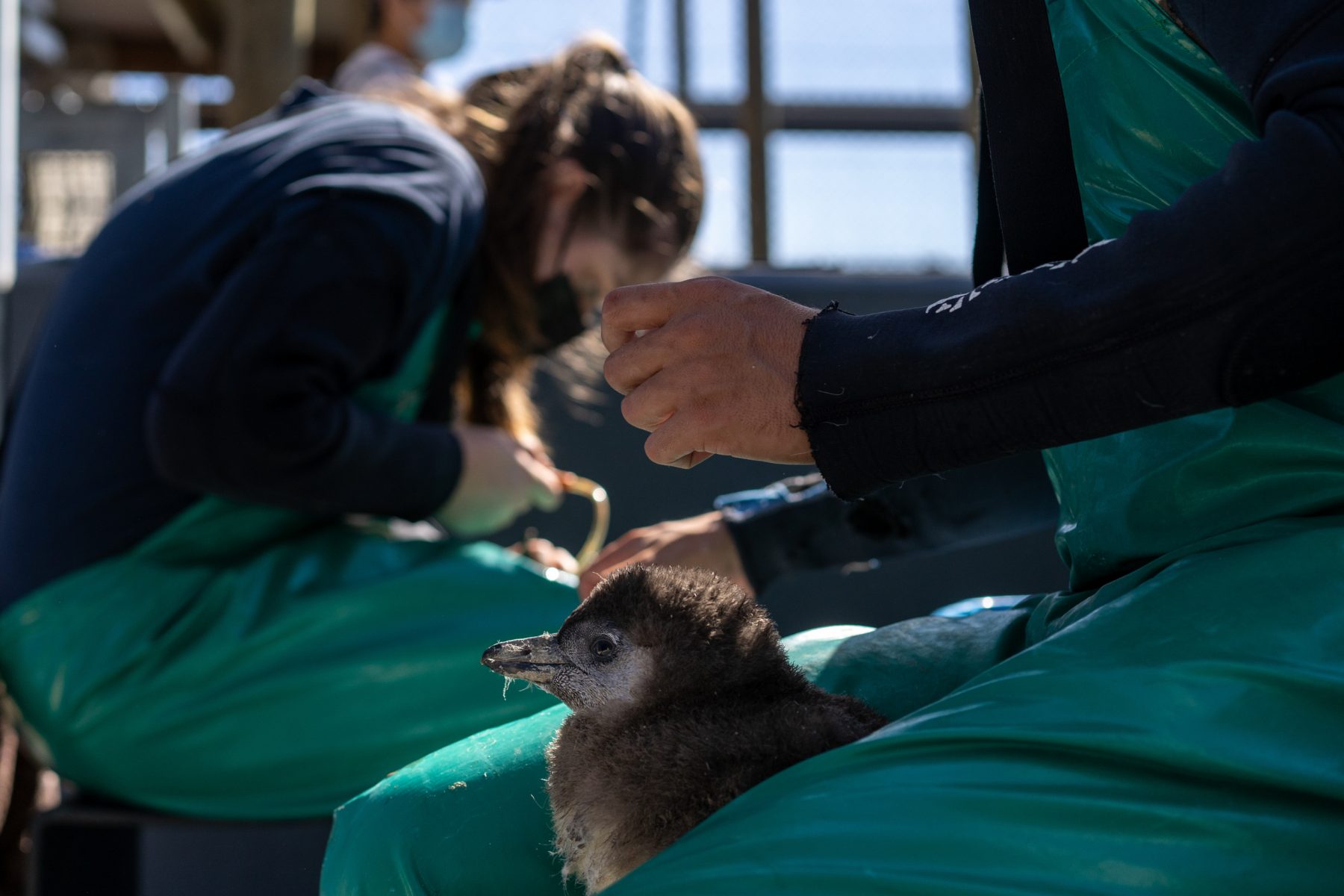 An African penguin chick waits patiently to be hand fed by a SANCCOB volunteer (Image: Barry Christianson / China Dialogue Ocean)
An African penguin chick waits patiently to be hand fed by a SANCCOB volunteer (Image: Barry Christianson / China Dialogue Ocean)
The females were not supposed to lay until March, but for the past few years, the endangered species hasn’t been sticking to the schedule. Researchers think that when stocks of sardines and anchovy, the birds’ primary prey, are unpredictable or scarce, penguins breed opportunistically. “It seems penguins think ‘Oh there’s fish, let’s quickly lay an egg!’ And then they lay at random times of the year,” explains Katta Ludynia, research manager at SANCCOB.
Recently, this means birds breed during high summer, when they’re more likely to get heat-stressed and have to abandon their offspring. It’s a trend repeated by other endangered birds, including Cape cormorants and Cape gannets: in January 2021, SANCCOB rescued 2,000 cormorant chicks whose parents had taken flight, “probably due to heat and mostly likely linked to lack of fish,” says Ludynia.
It’s thought that declining fish stocks are behind this, combined with climate change shifting where and when fish are available. Anecdotally, some fishers have noticed certain fish species arriving at unusual times in the season, and in areas they’d not been caught before, says Christian Adams, a small-scale fisher based in the West Coast town of St Helena Bay. “That was very unnatural for us,” he says.Compounding the stress, research shows that seabirds are also having to compete with commercial fishing boats for the unpredictable stock – which in the case of African penguins influences their breeding success and survival.
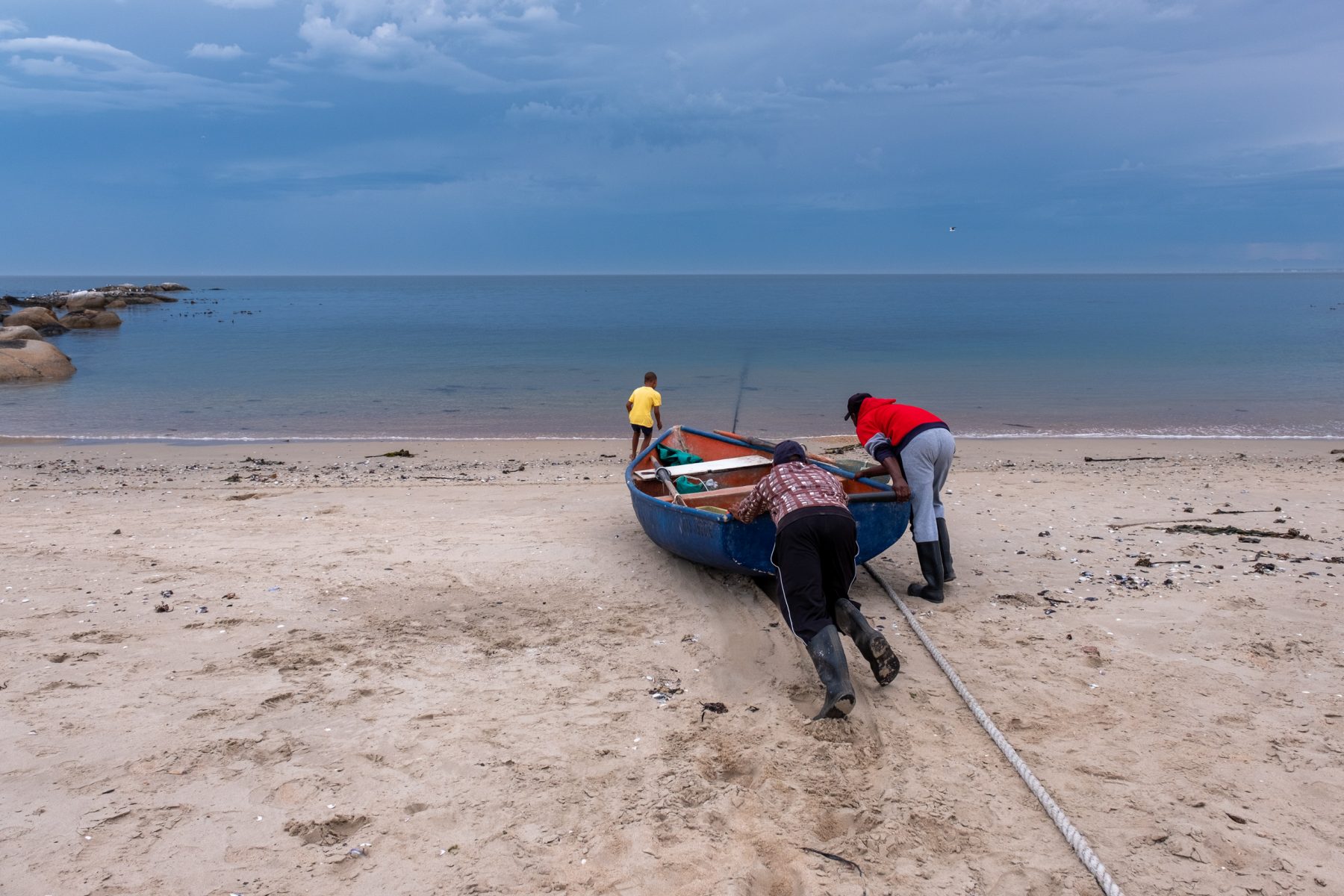 Small-scale fisher Christian Adams (center) sets off on a fishing trip from St Helena Bay, accompanied by his friend Anthony Stofberg and a boy from the neighborhood (Image: Barry Christianson / China Dialogue Ocean)
Small-scale fisher Christian Adams (center) sets off on a fishing trip from St Helena Bay, accompanied by his friend Anthony Stofberg and a boy from the neighborhood (Image: Barry Christianson / China Dialogue Ocean)
The birds that come to the rescue center are also increasingly underweight, says SANCCOB veterinarian David Roberts. “We get skinny penguins and other seabirds, or we get birds that were unable to go through their normal moult,” he says. Roberts explains that skipping a moult suggests a bird hadn’t eaten enough to run the risk of waiting weeks onshore while their new waterproof feathers come in. “I can easily say that’s a trend and it’s definitely unnatural.”
A multi-stranded crisis
There may be other food-related explanations for the die-off that hint at a wider ecosystem in flux. Emaciated dead seals might be explained by overpopulated colonies, possibly enabled by the decline of predatory great white sharks, another mystery that researchers are still trying to unpick. With growing numbers and limited colony space, it’s possible that yearlings and juveniles are being turfed off the rocks into the water, where, unable to fend for themselves, they starve.
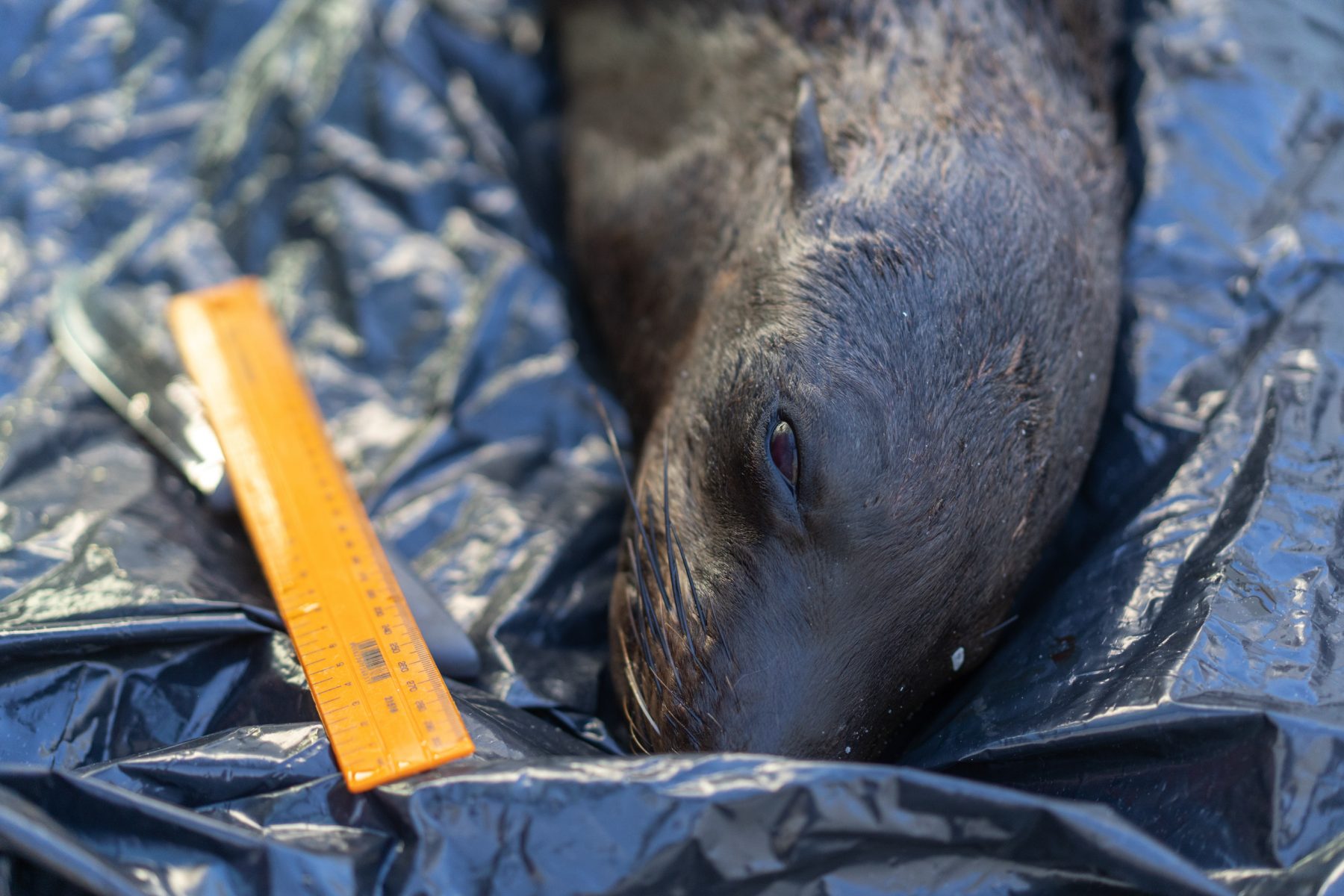 Another reason for the seal deaths may be overcrowded colonies, perhaps caused by the also-unexplained decline of the great white shark in South African waters. But Two Oceans Aquarium veterinarian Luca Mendes thinks a compound of different factors are most likely to blame. (Image: Barry Christianson / China Dialogue Ocean)
Another reason for the seal deaths may be overcrowded colonies, perhaps caused by the also-unexplained decline of the great white shark in South African waters. But Two Oceans Aquarium veterinarian Luca Mendes thinks a compound of different factors are most likely to blame. (Image: Barry Christianson / China Dialogue Ocean)
There may be further clues from California, where in 1998 changes to the Eastern Boundary Upwelling System – a current similar to South Africa’s Benguela – dramatically shifted the prey base and caused food shortages for sea lions. A suite of other factors, such as chemical pollution, and agricultural run-off, could also be interacting with prey, or changing how seals feed. “Potentially all of those factors combined open a door, meaning something like a harmful algal bloom can flourish and affect marine organisms,” says Gridley.
Five months on and several thousand corpses later, huge questions remain over the deaths of one of South Africa’s most charismatic marine species. The instinct when a crisis hits is to search for one answer, says Mendes. But he believes that ultimately, finding the causes behind the seal die-offs will require a multidisciplinary, ecosystem-level approach that considers toxins, pollution, climate change and fishing all together, as potential drivers of species decline. “If anything, this whole [die-off] highlights just how little we truly understand about the ocean, or the dynamics under the water,” he says.
After a long day up the West Coast and with another necropsy under her belt, Gridley hopes she’s getting closer to understanding the seals’ plight. Seal blood cleansed from her arms and face, she opens up the freezer in her office and takes in the accumulated work of the previous months – each frozen sample representing a lost seal, each one an environmental puzzle that she hopes to solve.
Barry Christianson contributed reporting to this article. Emma Bryce is a freelance journalist who covers stories focused on the environment, conservation and climate change.
This article appears courtesy of China Dialogue Ocean and may be found in its original form here.
The opinions expressed herein are the author's and not necessarily those of The Maritime Executive.

